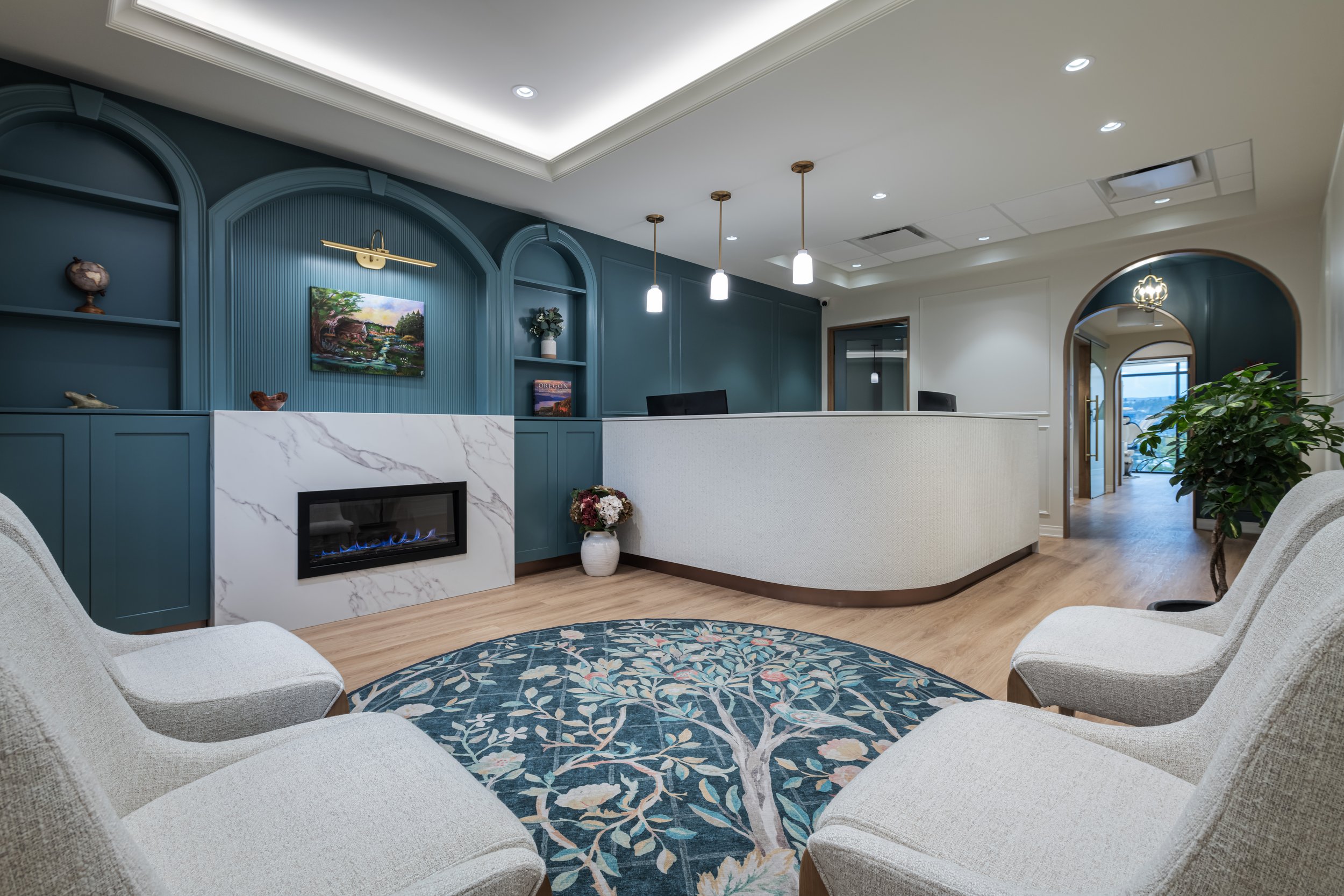
What to expect… other than an amazing view!
Your patient journey
1
Consultation
Your initial examination with the doctor to assess your specific situation and explain your diagnosis and treatment options.
2
Treatment
Some treatment can be accommodated on the same day as your consultation. However, a more complex case may require an evaluation and a separate appointment to provide treatment on another day.
3
Follow Up
After completing endodontic treatment, it's advisable to have your tooth examined at a follow-up appointment. This allows us to ensure that the tooth has healed or is in the process of healing.
FAQs
-
Endodontics is a specialized branch of dentistry concerned with the study and treatment of the dental pulp and the tissues surrounding the roots of a tooth. The term "endodontic" comes from two Greek words: "endo" meaning inside, and "odont" meaning tooth.
As a dentist with additional specialty training in endodontic procedures, the focus is primarily on diagnosing tooth pain and performing root canal treatment and other procedures aimed at saving teeth that would otherwise need to be extracted due to infection or irreversible damage to the pulp (the innermost part of the tooth containing nerves, blood vessels, and connective tissue).
Common procedures in endodontics include root canal therapy, retreatment of previous root canals, surgical root canal treatment (apicoectomy), and treatment of dental trauma affecting the pulp. The goal of endodontic treatment is to relieve pain, eliminate infection, and save the natural tooth so that it can function normally for chewing and aesthetics.
"Now explain it to me like I'm 8 years old..."
Alright! Imagine your tooth is like a little house. Inside this house, there's a special part called the pulp. The pulp has tiny blood vessels and nerves that help the tooth grow and feel things like hot and cold.
Sometimes, things can happen that make the pulp inside your tooth sick, like when you get a bad cavity or if you hurt your tooth really badly. When this happens, a special type of tooth doctor can fix the inside of the tooth by doing something called a root canal. The dentist removes the sick pulp and cleans out the inside of the tooth. Then, they put a special filling inside to make sure the tooth is sealed and strong. This way, you don't have to lose your tooth, and it can keep doing its job of helping you eat and smile!
So, endodontics is all about helping to fix teeth from the inside so they can stay strong and healthy.
-
For most patients, a local anesthetic injection helps to ensure comfort during the procedure. A thin sheet of latex classically known as the "rubber dam" (we also offer non-latex options) will be placed around the tooth to isolate it, maintaining cleanliness and dryness throughout treatment. The procedure typically involves accessing the root canal space at the centre of the tooth and roots in order to disinfect this space and then fill it up. While some treatments can be completed in a single visit, others may require two or more appointments. The duration of treatment is influenced by the extent of infection or inflammation and the complexity of the case. Our priority is to provide the highest quality of care, rather than adhering strictly to a predetermined timeframe.
-
Like any dental procedure, treatment can be rendered comfortably to the patient with effective local anesthesia (numbing of the tooth and area). In most cases, a root canal procedure is your best bet for getting out of pain. Your pain level before endodontic treatment will influence your pain after treatment; usually the worse it is, the longer it may take your tooth to settle down. However, It’s not uncommon for people to fall asleep while getting a root canal! That is a good sign of comfort.
-
A crown is often recommended after root canal therapy, especially on posterior teeth, for the strength and good quality seal required to protect your treatment. In some cases, a tooth with a crown will need crown replacement following endodontic treatment. This will be discussed with you and relayed to your dentist.
-
Sometimes a root canal can be done at the initial appointment, after proper assessment.
Some teeth, such as those already treated with root canal therapy, require the first appointment to be a consultation only. We will advise you of this at the time of scheduling.
A typical root canal procedure is usually completed over 1-2 treatment sessions. It all depends on the specific need of each tooth. Teeth, like people, are unique, and we believe every patient and every case deserves a custom approach.
-
Your dentist has referred you because your case may be more complicated than usual and he or she wants what is best for your dental health. The payment policies of our office may be different from those of your dentist. Fees for your endodontic treatment are relative to the complexity of each case and the specialty training and equipment required to render the care you deserve. You will be asked to pay the fee at the time of treatment.
If you have dental insurance, our office will assist you in receiving the maximum insurance coverage for your treatment. However, we do not accept payment directly from your insurer. As a courtesy, we electronically submit pre-determinations and claims on your behalf. Your insurer will then refund you directly, usually based on a percentage of the generalized fee for endodontic treatment. In our experience, electronically submitted claims are handled very quickly and our patients report that they have usually received their refunds within 5 business days. Ultimately, it is the patient’s responsibility to understand and manage his or her dental plan. Please call the office if you have questions.
-
To avoid a cancellation fee, our office requires two business days' notice so we may schedule another patient in need of care.





